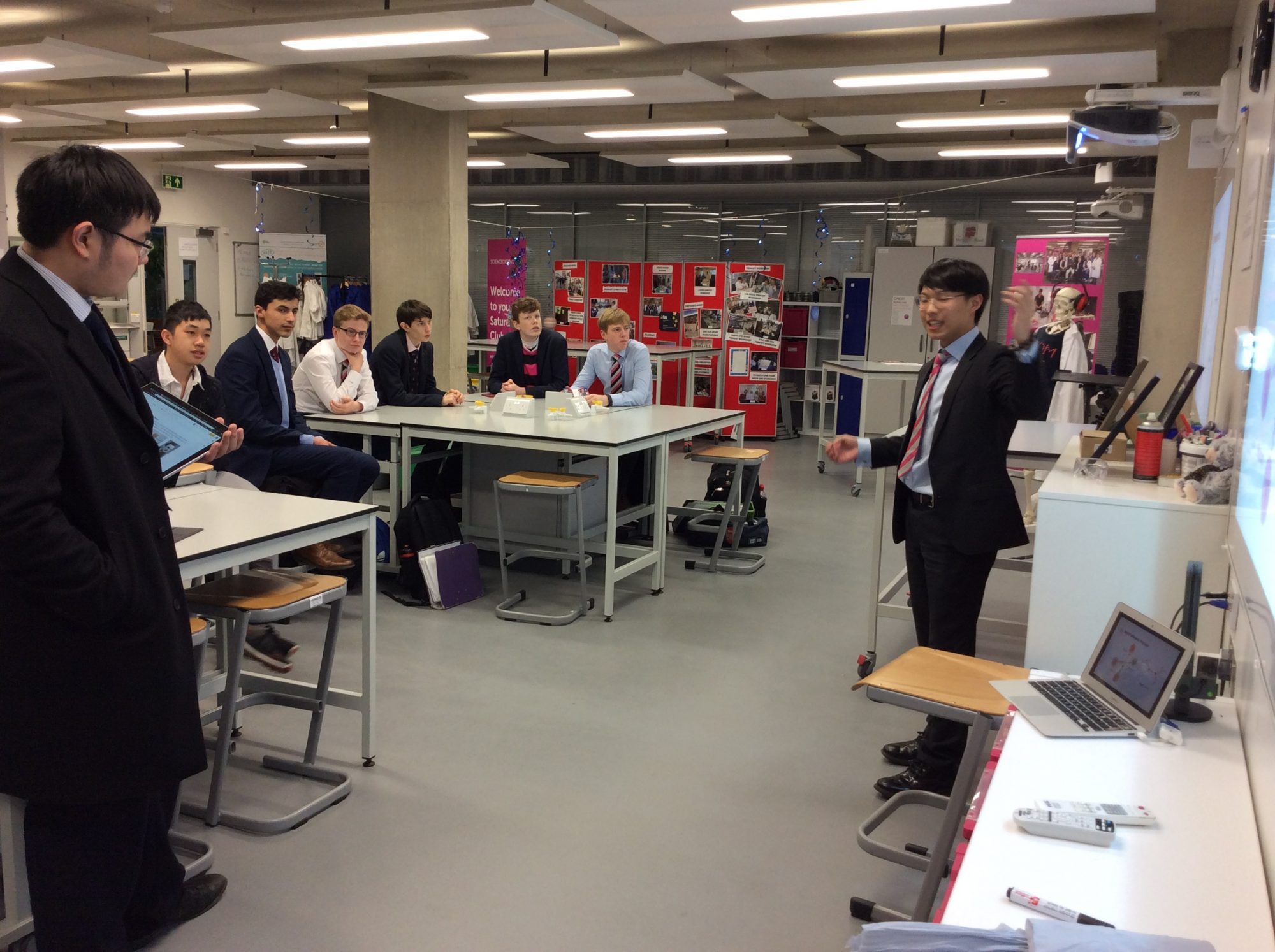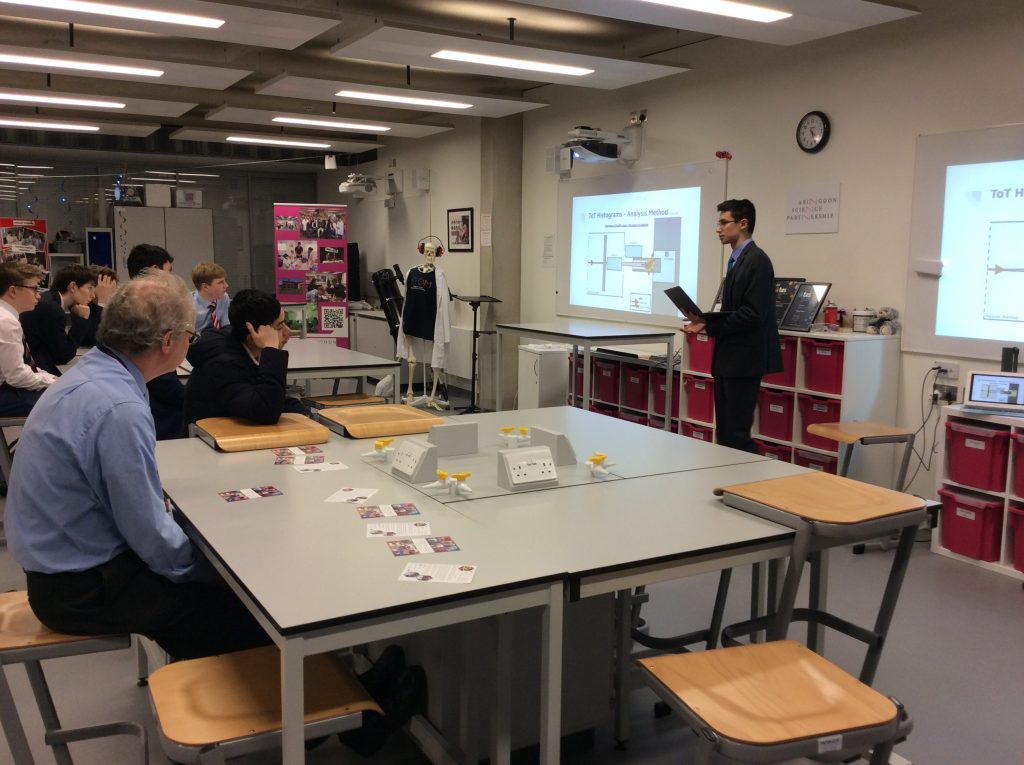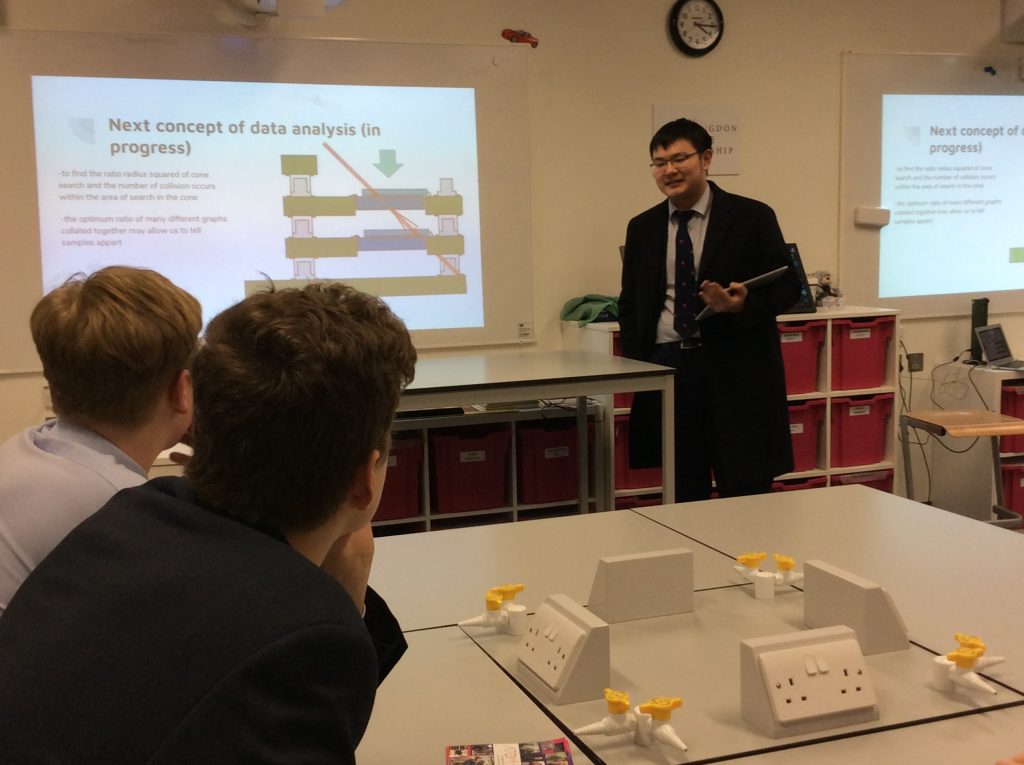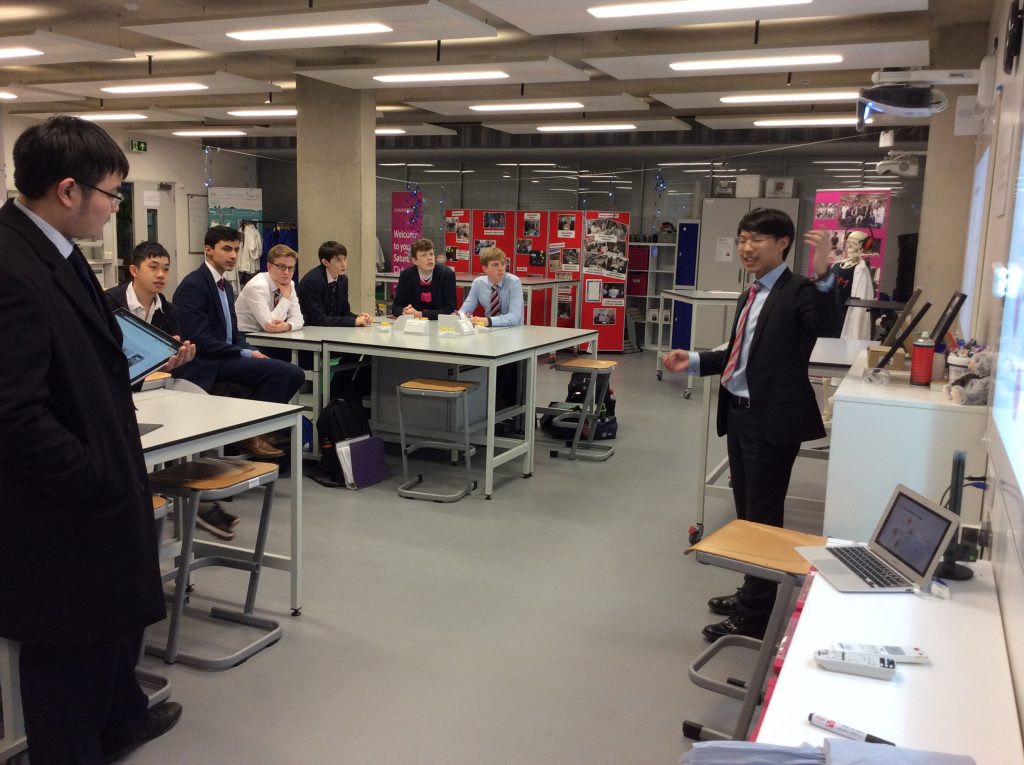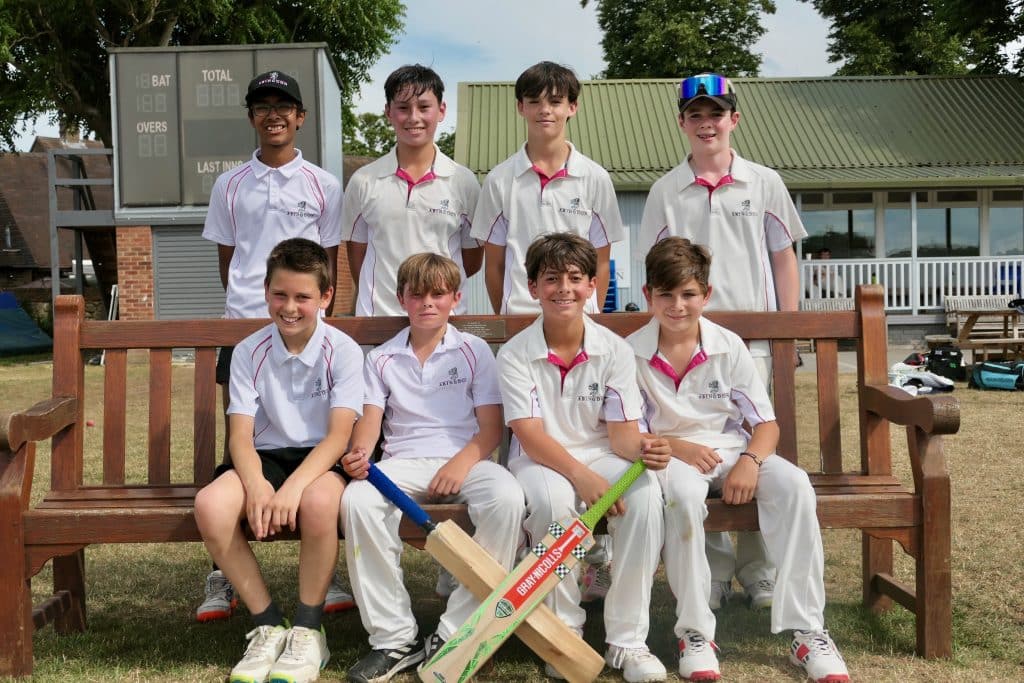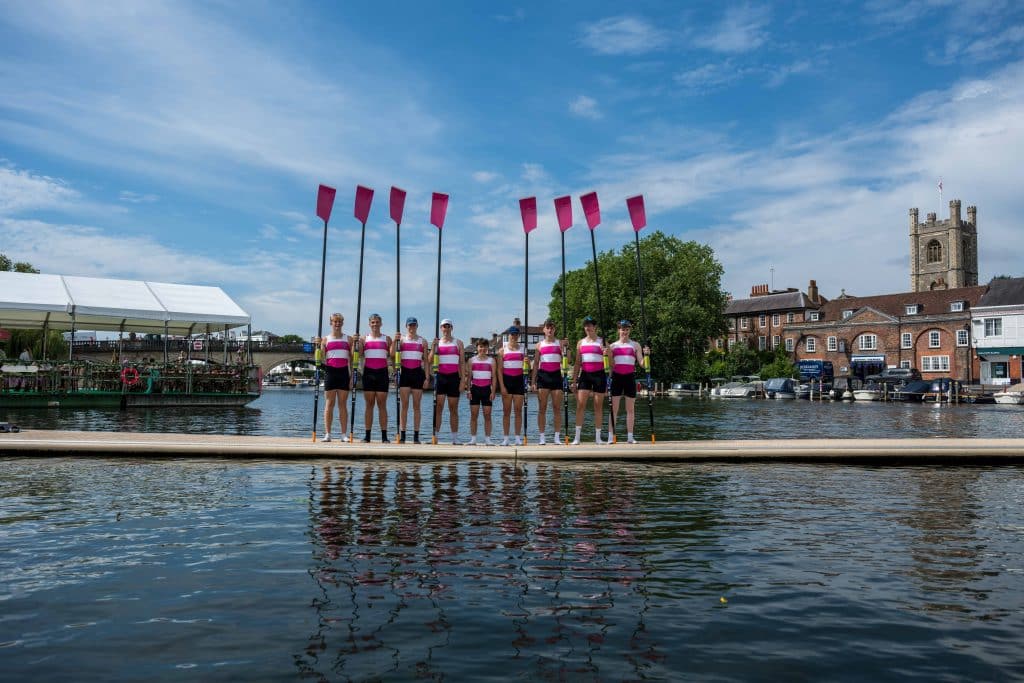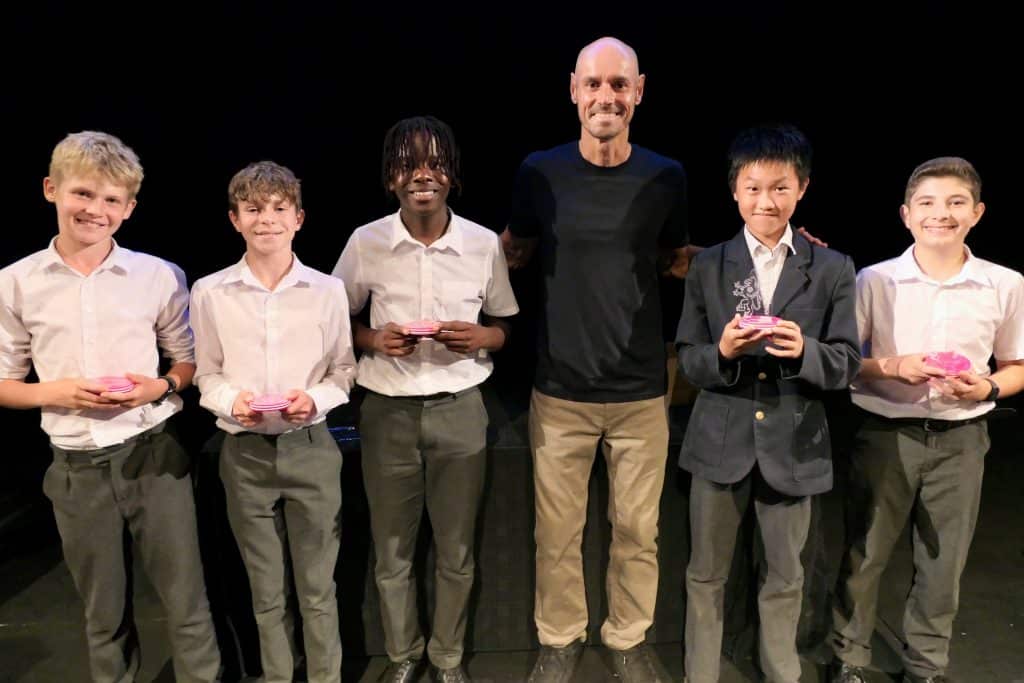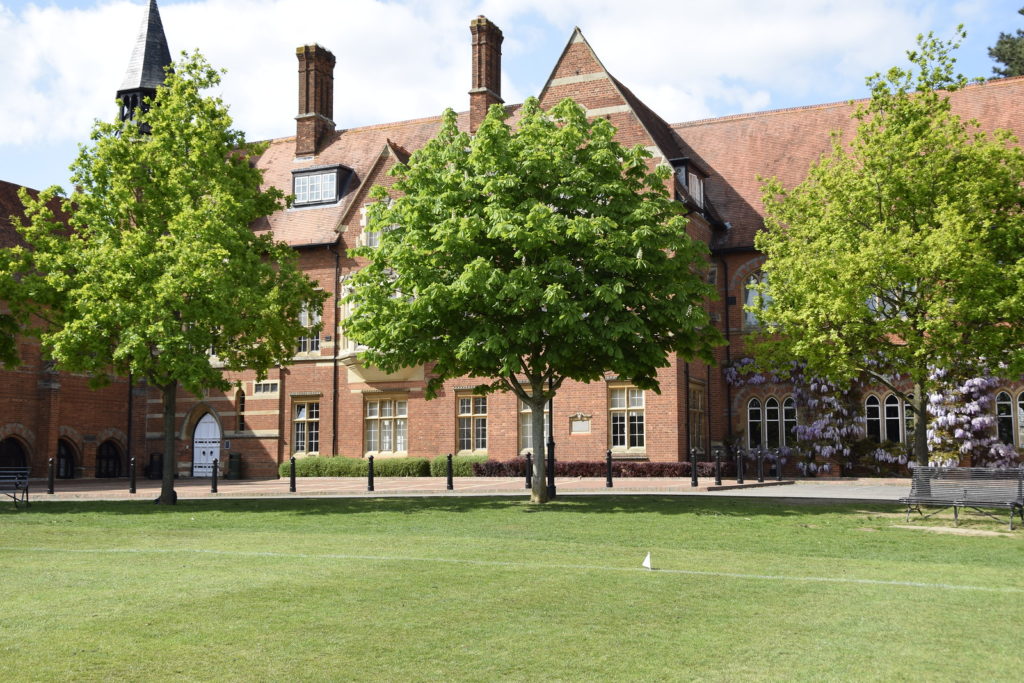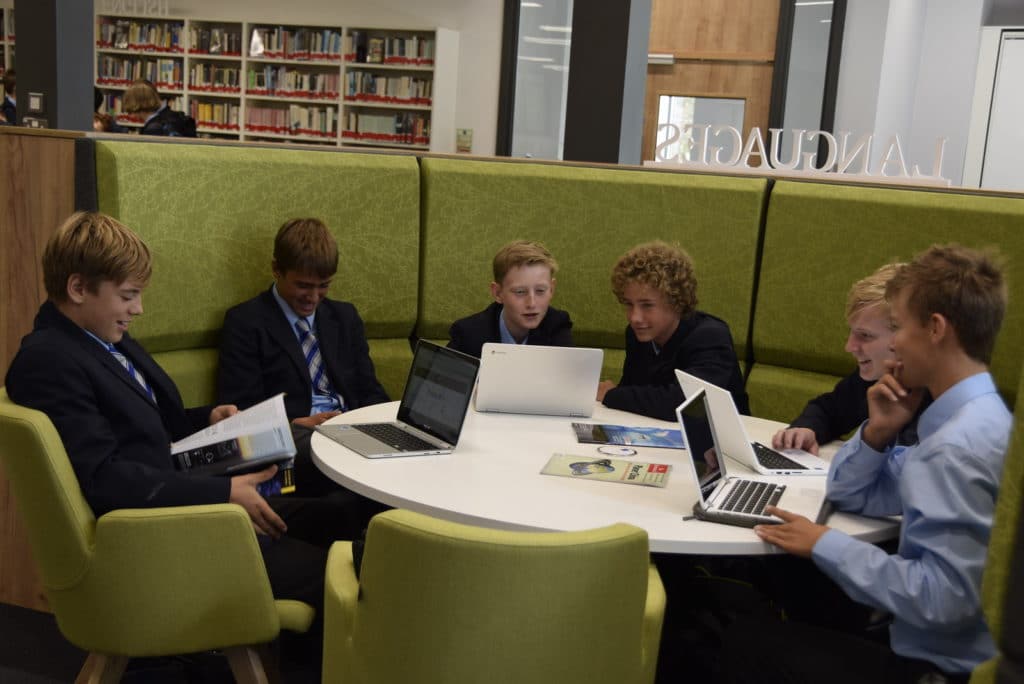28 January 2020
Three upper sixth physics students gave a Friday physics lecture describing the work they have done on the analysis of data from an experiment run at the Diamond Light Source by a team from Imperial College.
Peter Wan, Robert Zhang and Louis Yue were given the opportunity to work with the data set as a result of a collaboration with The Institute for Research in Schools (IRIS). Others who have made substantial contributions are Johnny Weng and OA Ollie Breach before he left to read Natural Sciences at Cambridge last year.
In their talk, the boys described the theoretical idea of the Breit-Wheeler effect where high energy photons collide to produce an electron-positron pair. This was predicted to be possible in 1934 but no experimental proof has ever been demonstrated.
The Imperial College experiment used the novel technique of two, parallel Timepix detectors to monitor radiation in the hope that a very small, statistical difference from background radiation would be detectable, indicating that photons were turning into matter particles.
Peter Wan described the basic workings of the Timepix detector, which the boys had also gained some experience in using during the project. Robert Zhang then outlined some of the computer analysis techniques that he and Johnny Weng had developed. Although these showed some promise, the data set from the limited number of experiments had not shown a conclusive result.
Finally Louis Yue described a statistical analysis of the difference between the signals recorded by the detectors during different versions of the experiment, again showing some promise and some intriguing differences between signals recorded by the front and back detectors. Louis’s technique in particular impressed the Imperial College team so much that their principal scientist, Professor Steven Rose, father of an OA, suggested that the boys write up their results for submission to a professional journal as a short note of interest to others working on similar detectors.
The final drafting of this paper is currently underway under the mentorship of Dr Peter Hatfield of Oxford University who was himself one of the first ever UK school students to carry out an IRIS project and now supports others in engaging in research whilst still at school.
